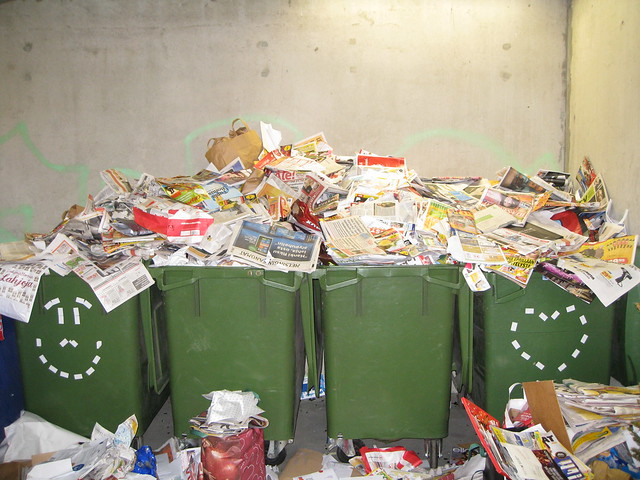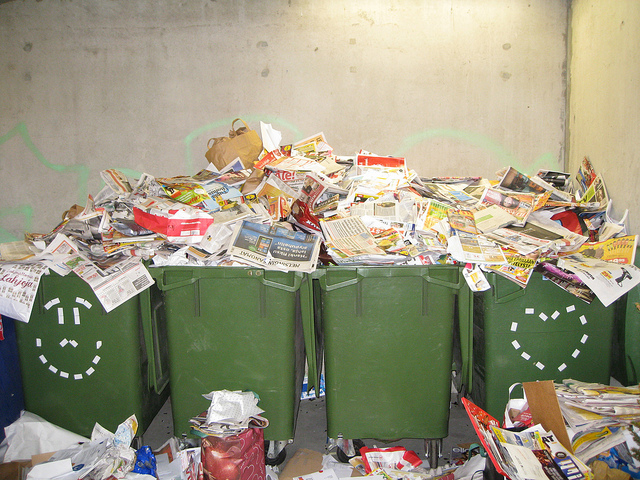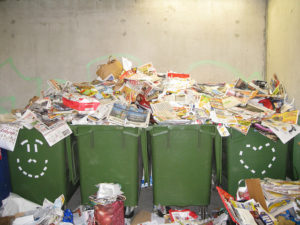
Most businesses are wasting a tremendous amount of money every year because they waste office paper. According to resource efficiency charity The Waste & Resources Action Programme (WRAP), UK businesses could save £23 billion per year by improving the way they manage resources. In the U.S., Reduce.org reports that the cost of using paper in an office can run 13 to 31 times the cost of buying it in the first place!
Tufts University and the non-profit Forest Ethics estimate that the average American office worker uses a sheet of paper every 12 minutes. That amounts to a ream per person every two and a half working weeks. In Britain, it’s estimated that the average office worker uses up to 45 sheets of paper per day, with half of this considered waste. Given what businesses pay for a 500-sheet ream, the notion that every staff member could essentially be wasting that amount of money every two-to-four working weeks should make any financial officer quake in his or her boots – especially after including the added costs of running printers, inks, toners and waste disposal.
The environmental costs are significant, too. Paper is one of the most energy-intensive products we use. The paper industry also uses more water to make a ton of product than any other major industry, along with an array of chemicals like chlorine and chlorine compounds. Plus, paper pulp may be produced from trees harvested from endangered forests and virgin, old-growth trees.
So what can you do to reduce waste office paper?
Most offices aren’t geared up to be completely paperless but there are many ways you can minimize both the financial and environmental impact of your office paper waste. Here are the five simplest and most cost-effective.
1) Use Less. The most obvious answer is to reduce usage. How? Print and copy on both sides. Exchange documents and memos electronically rather than printing or faxing. Determine whether circulars or hand-outs really need to be printed. Use electronic data storage rather than hard copy files.
2) Print smarter. Adjust fonts, margins and spacing to squeeze more text onto a standard sheet. Use a simpler type-face, rather than one with a lot of flair that requires more ink to print and takes up more space. Meanwhile, make printing somewhat inconvenient. Rather than have printers on employees desks, put them in a location that requires employees to get up and get their printed documents. It’s a little step, but can be very effective.
3) Use recycled-content, chlorine-free paper products. Making paper from 100% recycled content fiber instead of 100% virgin forest fibers reduces total energy consumption by 44%, net greenhouse gas emissions by 38%, particulate emissions by 41%, wastewater by 50%, solid waste by 49% and wood use by 100%, reports Environmental Paper Network in their 2007 State of the Paper Industry analysis.
4) Recycle paper rather than throw it away. Using paper recycling companies can ensure that the paper waste you do generate is dealt with in an environmentally sound manner – and all sensitive data can be destroyed in compliance with the Data Protection Act before going on to recycling.
5) Make it easy to recycle in the office. People will recycle when they know what paper to recycle, and when they can find recycling bins conveniently. Get your office to let employees know what they can recycle, and put in recycling bins near people’s desks and near the copying machines so it is convenient for people to use them.
Why waste money buying paper you’re just going to throw away? Protect your pocketbook as well as the planet by getting smart about how you use and recycle paper.













